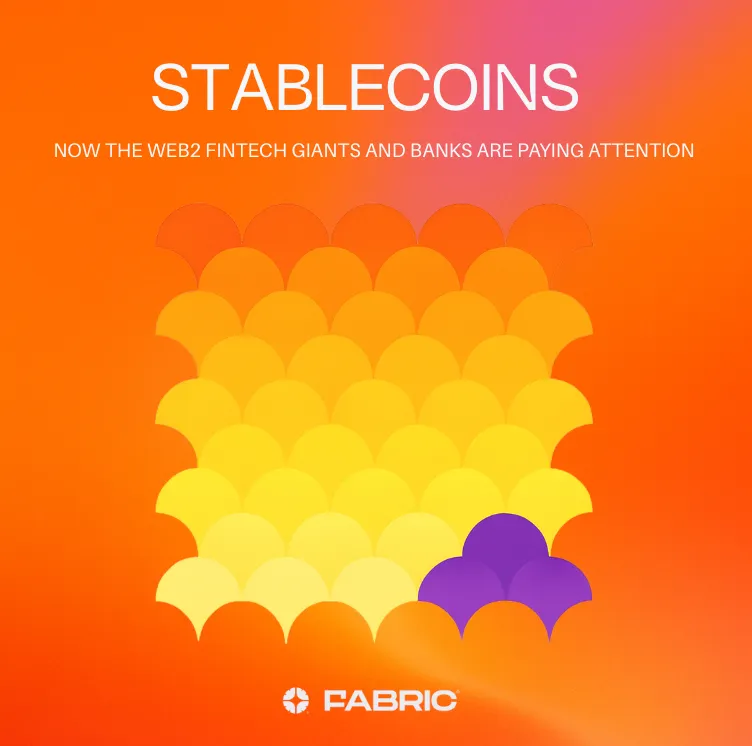
Inspired by Jack Zhang’s LinkedIn posts on stablecoins and observations from Money 20/20 Amsterdam
Jack Zhang of Airwallex recently ignited a fascinating and, at times, provocative discussion on LinkedIn concerning the evolving landscape of stablecoin payments. His insightful posts delved into critical questions: Are stablecoins primarily about speed and efficiency? Will established fintech giants dominate due to their distribution networks, or are genuine technological moats emerging? What role, if any, do stablecoins play for B2B payments versus, say, remittances? And, fundamentally, what is the power of internet-based money?
Jack’s posts (one and two), brimming with thoughtful commentary, are essential reading for anyone interested in a good 2 sided debate:
Inspired by Jack’s discourse, I’d like to share my own perspectives on these pivotal topics. What is clear over the last year is that now stablecoins have become important enough (or scary enough) for large established banks and fintechs to weigh in. That means we are clearly passed off-chain product market fit (PMF). But where does this PMF come from? And who will actually benefit? And is there more to come?
1. The Enduring Power of Distribution and the Disruptor’s (W)Edge
Jack is correct about distribution. Distribution is of course a critical enabler across most industries, and payments are no exception. Ironically, even the payment titans of before the likes of Revolut and Stripe and of course Airwallex, likely viewed their distribution prowess as a formidable moat in those early days of Airwallex.
Indeed, broad distribution fosters transparency, mitigates mismanagement, and facilitates smoother, more effective financial operations. It so happens that native blockchain features such as immutability, decentralisation, trustlessness, finality, privacy with traceability, and settlement efficiency inherently support these very same objectives. In addiion, many stablecoins amplify these benefits further, offering tokenised e-money that is compliant, programmable and available 24/7. So the customer trust that is currently earnt from a Web2 position of being an established middleman, can clearly be recreated in different ways.
Not to argue that distribution itself is not desirable for other business reasons. Of course it is: for business success. While building a robust distribution network, especially one with two-sided network effects, is undoubtedly challenging, it is far from insurmountable for next-generation disruptors. In fact, achieving distribution can be arguably easier today if a compelling “disruptive wedge” is present. Consider Revolut, which many initially perceived solely as a preferred FX option for developed market tourist travellers i.e. a secondary bank account for specific limited purposes . We all know too well that that powerful wedge has paved the way for it to be much more ($4bn 2024 revenue, products across banking, business banking, subscriptions, crypto, wealth, cards). Similarly today, the on-chain payments landscape offers a plethora of such disruptive wedges.
What is true however is that liquidity remains paramount for the widespread adoption of stablecoins, and happily, it is experiencing explosive growth. Stablecoins are no longer seen merely as an on-ramp for the relatively niche DeFi addressable market. Their reliance on a few centralised exchanges (CEXs) or large issuers for liquidity is diminishing, thanks to the emergence of local stablecoins, over-the-counter (OTC) desks, decentralised exchange (DEX) FX aggregators, settlement interoperability solutions, and new liquidity sources appearing at the merchant level with every stablecoin transaction, be it for a coffee or more. Companies such as Nilos and Darika are solving for liquidity in their different ways.
2. Overcoming Persistent On-Chain Technology Challenges
Despite Jack’s belief to the contrary, on-chain payments are not just a distribution game and they remain technically hard to solve. If they weren’t, PayPal, Stripe, and others would already dominate the space. Current moves — PayPal’s partnership with Paxos, Stripe’s Bridge acquisition — are just the first innings.
Some examples from Fabric Ventures ecosystem of companies, follows:
- The complexities of using cards with self-custodial wallets and the intricate double-spend problem (Kulipa)
- The optimisation of card acceptance rates for API on-ramps, given the inherent high-risk nature of the industry (Ramp Network)
- Providing the necessary transaction monitoring and compliance insights demanded by traditional fiat banking systems (Fiat Republic)?
- Building and managing on-chain ledgers for settlement requires specialism as is the focus of companies (ValoX)
- Implementing subscription pull payments on-chain, or enriching on-chain transactions with contextual data for merchant back-office systems (Loop Crypto)
- The orchestration of payments end to end across various chains, stablecoins and corridors in a compliant way is another monumental task.(Hifi or Xweave or Due). The empires of Visa and Mastercard thrived by standardizing fragmented systems and bringing certainty and security to the traditional finance world. Today, stablecoin payment orchestration may follow a similar path — but led by on-chain infrastructure.
Jack is correct in agreeing that Stripe’s substantial acquisition of Bridge reflects Stripe’s strategic desire to keep money on-chain within a Stripe two-sided network. However, I disagree that this effort is limited to Africa or Latin America; it encompasses all of Stripe’s merchant flows. PayPal’s efforts with its own stablecoin within its two-sided merchant network reflect a similar global aspiration. Lets dive into that next.
3. Stablecoin Traction: From a Focus on Speed and Cost in the Global South today, to Unmasking Fragmented Realities in more Mature Markets
Despite what Jack says, today’s stablecoin traction in payments is undeniably driven by the speed and cost efficiencies seen mainly in the Global South. While some adoption also stems from arbitraging regulations or currency controls (a tactic many early fintechs, like neobanks, also employed), you’d be hard-pressed to convince any remittance provider or import/export SMB in developing markets that it is not speed and cost.
I agree that in the Global North markets, the general perception is that payments “just work” quickly and efficiently, as exemplified by SEPA in Europe, and concerns about native fiat currency inflation are negligible here too. However, these generalisations by mature market practitioners often mask the fragmented reality of a payments ecosystem built over many years on inflexible, hard-to-change (let alone maintain) COBOL programming languages within incumbent banks. Many of these legacy systems were then spun out and backed by private equity firms, whose primary investment drivers were cash flow, not innovation refresh.
Even today, we grapple in Europe with a multitude of systems that simply do not communicate efficiently, leading to ingrained middleman inefficiencies and tolls. In a mature market like Europe, the landscape is a dizzying array of local schemes, global schemes, card schemes, A2A schemes, SPAA, giroAPI, Visa/MC, girocard, PayPal, B2B schemes, payment-connected schemes (like EUDIW), central-bank driven D€/CBDC (with notable exceptions for non-Eurozone countries and corporate payments which is perhaps 80% of the market), and now Wero/EPI (for 6 out of 27 European countries) and EuroPA (for 8 out of 27 European countries), among others.
A vivid illustration of this fragmentation emerged just this morning as I spotted a quote from ThisIsMoney.co.uk which stated, “For example, the majority of transfers from Virgin Money stocks and shares Isas are processed by default as a cheque and posted to the new provider while other providers use electronic transfers. You requested to transfer the Isa from Virgin Money to Lloyds on January 10. But four months later when you contacted This is Money, the transfer had still not moved forward.” Four months for a transfer! This, sadly, is the true state of affairs with current mature market fiat rails.
4. B2B in G10 Corridors: Think beyond Payments
Since payments for businesses within G10 corridors are already so efficient, this is often the primary quoted argument against the need for stablecoins in these maturer markets. Jack knows B2B better than most: Airwallex has scaled impressively by offering efficient global banking infrastructure leveraging interbank rates (point of note: I still regret not being able to convince my partners at PayPal to invest in Airwallex back in the day!) However, B2B payments are a volume game with very tight margins. The true disruption to these traditional finance B2B payment companies will occur when merchants no longer need to move money off-chain and can unify their ledgers and ERP/CRM systems with both on-chain and off-chain contextual transaction data.
The relevant comparison in B2B should not be whether payments on and off chain are faster or cheaper. Instead the opportunity lies within the comprehensive suite of services and automation a B2B payments company offers one’s business clients — from accounts, pay-in, pay-out, FX, treasury management, yield/risk management, reconciliation, and multijurisdictional cards, among others. It appears from Jack’s second post, that he recognised the opportunity that stablecoin’s programmable money presents in addressing these broader opportunities more efficiently.
Perhaps Airwallex should consider issuing their own stablecoin as well, to maximise this opportunity. As stablecoin trust improves with corporate treasurers, the use case moves beyond payments into embedded services, margin improvement, and revenue optimization. Ultimately, a merchant’s treasurer will determine the acceptable counterparty risk of a stablecoin issuer. An entity like Alphabet will have a different threshold than a small or medium-sized business in Africa. This will depend on the counterparty risk rating of the stablecoin (quality of the regulator, rating of the reserve bank, confidence in redemption, quality of treasury management, trusted brand, size of Assets Under Management, choice of issuance blockchain etc.), but also on how the issuer and their partners incentivise adoption and the associated cost savings and efficiencies of using stablecoins. Quantoz Payments is an example of a white label USD/EUR issuer in Europe with a high quality “counterparty” risk rating positioning.
5. Money20/20 Amsterdam hinted that the Bigger Future Opportunity for Stablecoins is in the Global North
Having spent years deeply involved in on-chain payments and attempting to foster innovation from within incumbents like Google and PayPal, I would wager that fintech giants like Airwallex will likely need to pursue partnerships or acquisitions (especially with Web 2.5 specialists) rather than solely organic growth to truly thrive in this domain. We have already seen such moves by Stripe. I’d be happy to connect them with relevant solutions from our portfolio at Fabric Ventures.
This isn’t merely conjecture; it reflects the widespread inbound enquiries I encountered at Money20/20 Amsterdam recently. Numerous established payment companies and banks expressed these very same interests to me. They recognise the undeniable disruption risks as well as opportunities or perhaps, their clients are already posing challenging questions to them:
- Merchant gross margins, especially for marketplaces, are always under pressure, making it imperative for them to optimise the flow and float of money and to explore new revenue lines (together with their merchant acquirer partners): a) Accepting new payment methods like stablecoins to avoid losing hard-won customers. b) Unifying and reconciling disparate payment flows from on and off chain. c) Optimising treasury holdings and yields for their float. d) Making efficient payouts to their providers (considering both transaction costs and back-office resources). e) Rewarding loyal customers. f) Monetising those customers further with embedded financial services, such as with cards and on a multijurisdicational basis. g) Managing all of the above cross-border.
- Many stablecoin holders are keeping them in their wallet and treating them like an on-chain checking account, leaving balances in place to be ready for future transactions i.e. a new secondary account wallet-based ecosystem which is removing fiat currencies from economies for periods of time. Adding the ability to earn yield by investing the stablecoin collateral (staking, LP etc) poses a potential challenge for commercial banks. This will only get worse if merchants decide to keep settlement funds on-chain and corporate treasurers decide to maintain a diversified portfolio including stablecoins. More banks are likely to amend their business models and become issuers of their own stablecoins to earn on collateral and more importantly keep liquidity within their network by recirculating their own stablecoins continually across and between their clients. Indeed, banks are likely to incentivise such behavior through cost savings or loyalty programs. On-chain BaaS specialists, like Fiat Republic, are already executing on this vision for qualified corporate customers.
- An interesting direction of travel is the emergence of tokenised money market funds (MMF) for yield participation for holders (vs. regulated stablecoins for payments which are regulated as cash equivalents vs securities). As stablecoins and tokenised MMFs become instantaneously convertible as possible and blockchain privacy prevents market players seeing their rivals topping-up their collateral for example, the two worlds (liquidity/payments and yield) become almost seamless for corporate treasurers. This is the direction of travel that Circle has shown via its acquisition of HashNote.
- Despite the wider regulatory oversight of being a bank, we could also see non-bank stablecoin issuers pursue banking licenses themselves for trust building, to be able to offer a wider range of financial services and to directly access central bank settlement rails such as the Federal Reserve System for faster and more cost-effective transaction settlement to fiat (the banking lobby is fighting this access very effectively to date, despite the potential Genius Act). There have been rumours that Circle would seek a banking charter.
The above covers possible future directions for stablecoin usage but critically these are not restricted to addressing Global South inefficiencies as Jack limits the success of stablecoins to. These all feel like opportunities for stablecoins in the Global North to me.
Conclusion
Jack Zhang is absolutely right about the future potential of the Internet of Money — though that’s not what’s driving stablecoin usage today. At Fabric Ventures, the Internet of Money is a core investment thesis for the next cycle, and we envision a beautiful reversal of the investment theme of embedded payments. Instead of payments being integrated into software workflow SaaS (e.g. payroll), the workflows themselves will be triggered by stablecoin movement — enabled by smart contracts or even autonomous agents. The implications of programmable, agentic payments for vertical SaaS are profound — and a topic for another day.
The heated conversations sparked by Jack’s posts highlight the dynamic and often complex nature of the stablecoin revolution but also that we are early in seeing the full picture of opportunities. Despite ongoing challenges for on-chain players across technology, liquidity, and distribution, the benefits of stablecoins — speed, cost, programmability, decentralisation, and their ability to unify fragmented payment systems — are undeniable. As liquidity deepens, infrastructure matures and trust in (certain) stablecoin issuers grows, the use cases will move from the niche to broad adoption. This won’t just benefit the Global South but will benefit banks, businesses and merchants worldwide, all seeking greater customer value propositions, further monetisation of their customers, and efficiencies in their operations. Banks and trad-fi payment companies are starting to be challenged on this directly from their own clients and in public, at industry leading events like Money 20/20 (not just from the mouths of blockchain startups or operators turned VCs like myself).
By Anil Hansjee, Fabric Ventures
• • • • •
For more information on Fabric’s portfolio, opportunities and our investment thesis please visit our website and follow us on Twitter, LinkedIn, Farcaster & Orb.


.png)